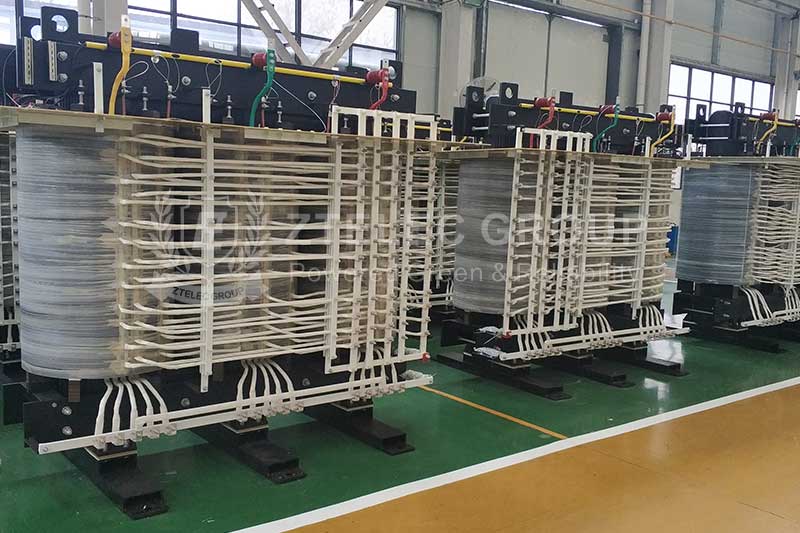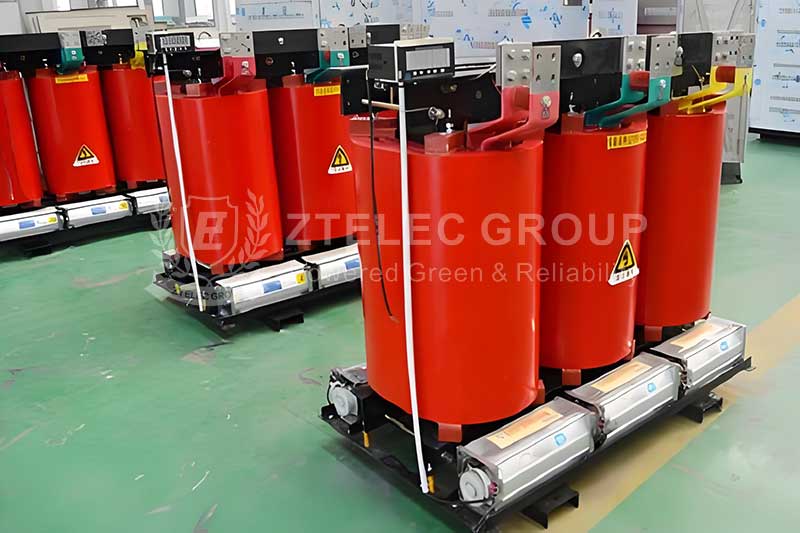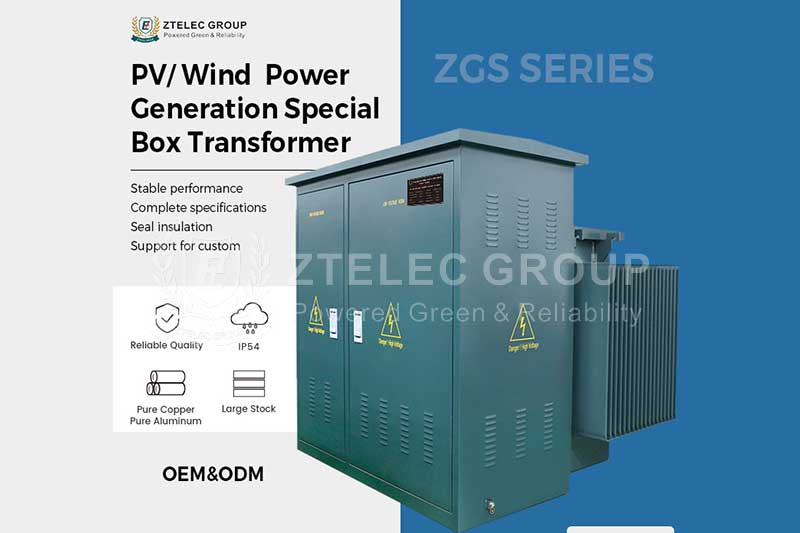How does a transformer change voltage?
Time:2024-11-13 Auther:ZTelec-www.ztelectransformer.com
Basic structure of transformers
The transformer is mainly composed of an iron core (or magnetic core) and a coil. The coil has two or more winding, of which the winding connected to the power supply is called the primary coil (or the primary coil, the primary winding), and the rest of the winding is called the secondary coil (or the secondary coil, the secondary winding).
The basic principle of transformer conversion voltage is electromagnetic induction . When an alternating current passes through the primary coil, it creates an alternating magnetic field in the core. This magnetic field creates an induced electromotive force in the secondary coil, which creates a voltage across the secondary coil. Since the strength of the magnetic field is proportional to the number of turns of the coil, the voltage can be changed by changing the number of turns of the primary or secondary coil.

How does a transformer change voltage?
1. Electromagnetic induction principle: The working principle of the transformer is based on electromagnetic induction. When an AC power supply is connected to the primary coil, according to the principle of electromagnetic induction, the changing magnetic field will create an induced electromotive force in the secondary coil. The magnitude of this induced electromotive force depends on the degree of coupling between the primary and secondary coils.
2. Induced electromotive force generation: Because the primary coil and secondary coil are wound on the same iron core, and the alternating magnetic flux passes through the two coils, the induced electromotive force will be generated in the two coils respectively.
3. Voltage conversion: The transformer realizes voltage conversion by changing the coupling degree between the primary coil and the secondary coil. Specifically, when the voltage of the primary coil changes, the changing magnetic field creates a different magnetic flux, resulting in a different induced electromotive force in the secondary coil. By adjusting the ratio of turns between the primary coil and the secondary coil, the output voltage can be changed.

Application and voltage regulation mode of the transformer
Transformers are widely used in power transmission and distribution systems. And it adapts to different voltage requirements by adjusting the turn ratio of the transformer. There are two main voltage regulation methods of transformers:
No excitation voltage regulation: This method is to adjust the turn ratio by changing the position of the tap changer, which is suitable for small power transformers.
On-load voltage regulation: This method is to adjust the turn ratio when the transformer is running. It is suitable for large power transformers .
Characteristics and limitations
Constant frequency: The transformer can only change the size of the voltage, but not the frequency of the voltage. Because the alternating magnetic flux generated by the primary side is the same frequency as the primary side voltage, and the voltage induced by the secondary side is the same frequency as the alternating magnetic flux.
Power conservation: The power of the primary input is equal to the power of the secondary output without considering the loss of the transformer. This means that the transformer cannot increase the power, but can only transfer the power from the primary to the secondary, so that the voltage rises or falls.
Impedance transformation: The transformer can also realize the impedance transformation. When the primary and secondary access the appropriate impedance, the primary and secondary impedance of the transformer can be matched, and the transformer works in the best state and the transmission efficiency is the highest.




